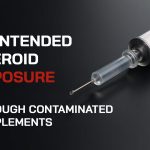Your cart is currently empty!
Category:
The Ultimate Guide to Workout Supplements: Top 10 Essential Supplements for Maximizing Strength, Stamina, and Muscle Growth
November 15th, 2024 by anabolicpointIntroduction
In the pursuit of fitness goals, whether you’re a seasoned athlete or a fitness newbie, the right supplements can provide that extra edge. From boosting energy and endurance to promoting faster recovery and muscle growth, supplements are powerful allies in a well-rounded fitness regimen. Yet, with countless products and endless claims, it can be overwhelming to figure out which supplements truly deliver and align with your specific workout goals.
This guide delves into the science and benefits behind the best workout supplements available today. We’ll explore essential supplements like protein powder, creatine, BCAAs, and others that have shown effectiveness and can help you maximize your workouts. This article will provide in-depth information on each supplement, including how they work, optimal usage, benefits, and even potential side effects. By the end, you’ll be equipped with the knowledge needed to make informed decisions about the best supplements to take your fitness journey to the next level.
1. Protein Powder: Building Blocks of Muscle
What It Is:
Protein powder is a concentrated source of protein derived from a variety of sources, including whey, casein, soy, peas, and hemp. Protein is essential for muscle repair, growth, and recovery, making it one of the most popular and necessary supplements for anyone engaging in physical activity.
Benefits:
- Aids in muscle recovery and growth.
- Helps meet daily protein needs, especially for individuals with higher protein requirements due to intense training.
- Offers convenient nutrition, ideal for post-workout recovery and as a meal supplement.
Types of Protein Powder:
- Whey Protein: A complete protein containing all essential amino acids, it’s quickly absorbed, making it ideal for post-workout recovery.
- Casein Protein: A slower-digesting protein that provides a steady release of amino acids, suitable for sustained muscle repair.
- Plant-Based Protein (Pea, Hemp, Soy): Great options for those avoiding animal products; pea protein, in particular, is a complete protein and highly absorbable.
Optimal Usage:
For most people, 20-30g post-workout is sufficient to help stimulate muscle protein synthesis. Those with higher protein requirements may benefit from additional servings spread throughout the day.
Potential Side Effects:
Generally safe when used correctly, but may cause digestive discomfort in some individuals. Lactose-intolerant individuals may experience issues with whey, though there are lactose-free options.
2. Creatine Monohydrate: Boosting Strength and Power
What It Is:
Creatine is a compound that occurs naturally in muscle cells, helping produce energy during high-intensity exercise. Supplementing with creatine monohydrate increases the muscle’s stored levels of creatine, which can lead to improved strength, power, and muscle growth.
Benefits:
- Enhances strength and power output.
- Supports muscle growth through improved workout performance.
- Speeds up recovery after intense exercise.
How to Use Creatine:
Take 3-5g daily. To speed up results, you can “load” creatine by taking 20g daily (split into 4 doses) for 5-7 days, then switch to a maintenance dose of 3-5g per day.
Side Effects:
Some may experience mild bloating or digestive discomfort. Staying well-hydrated can help mitigate potential side effects.
3. Branched-Chain Amino Acids (BCAAs): Enhancing Muscle Recovery
What They Are:
BCAAs consist of three essential amino acids—leucine, isoleucine, and valine—that play a key role in muscle protein synthesis and muscle recovery.
Benefits:
- Reduces muscle soreness and fatigue.
- Can help sustain muscle mass during calorie deficits (e.g., when dieting).
- May improve endurance and reduce muscle breakdown during prolonged exercise.
When to Use BCAAs:
BCAAs are often taken before or during a workout, with 5-10g being a common dosage. They’re particularly beneficial if you’re training fasted or have long gaps between meals.
Potential Side Effects:
BCAAs are generally safe but may cause mild digestive upset if taken in large amounts.
4. Beta-Alanine: Combatting Fatigue and Enhancing Endurance
What It Is:
Beta-alanine is an amino acid that helps buffer acid in muscles, delaying fatigue and enhancing endurance.
Benefits:
- Delays muscle fatigue during high-intensity activities.
- Enhances endurance and performance, particularly in activities lasting 1-4 minutes.
- Can improve high-intensity workout capacity.
How to Take Beta-Alanine:
Take 2-5g daily, ideally split into smaller doses to avoid a tingling sensation (paresthesia) that some people experience.
Side Effects:
The most common side effect is a tingling sensation, which is harmless and can be minimized by taking smaller doses.
5. Caffeine: Fueling Energy and Focus
What It Is:
Caffeine is a natural stimulant that increases alertness, focus, and energy levels, making it a popular pre-workout ingredient.
Benefits:
- Boosts energy, focus, and workout intensity.
- Increases fat oxidation, making it beneficial for endurance workouts.
- Improves reaction time and mental focus.
How to Use Caffeine:
For most people, 150-300mg taken 30-60 minutes before a workout is sufficient. Avoid taking caffeine too late in the day to prevent sleep disruption.
Potential Side Effects:
Overuse can lead to jitters, anxiety, and insomnia. Adjust your dose to your tolerance level.
6. Omega-3 Fish Oil: Supporting Heart Health and Reducing Inflammation
What It Is:
Omega-3 fatty acids, particularly EPA and DHA found in fish oil, have anti-inflammatory properties that are beneficial for heart health and muscle recovery.
Benefits:
- Reduces inflammation and supports joint health.
- Aids muscle recovery by reducing post-exercise soreness.
- May improve heart health and cognitive function.
How to Take Omega-3 Fish Oil:
1-2g of combined EPA and DHA daily is a typical dosage for athletes. Choose high-quality fish oil to avoid contaminants like mercury.
Side Effects:
Possible fishy aftertaste; enteric-coated capsules may reduce this. High doses can thin blood, so consult a doctor if on blood-thinning medication.
7. Electrolytes: Hydration and Endurance Essentials
What They Are:
Electrolytes, including sodium, potassium, and magnesium, are essential for maintaining hydration, especially during prolonged or intense exercise where sweat loss is significant.
Benefits:
- Helps maintain proper hydration and muscle function.
- Reduces the risk of muscle cramps.
- Supports sustained endurance and performance.
How to Use Electrolytes:
Use electrolyte supplements during long workouts, particularly in hot conditions. Drink electrolyte-rich beverages if working out for more than an hour.
Side Effects:
Generally safe but may cause digestive upset if taken in excess.
8. L-Citrulline: Improving Blood Flow and Muscle Endurance
What It Is:
L-citrulline is an amino acid that enhances nitric oxide production, promoting improved blood flow and muscle endurance.
Benefits:
- Increases endurance and reduces muscle soreness.
- Supports faster recovery by improving blood circulation.
- May improve strength by enhancing oxygen delivery to muscles.
How to Take L-Citrulline:
6-8g taken 30-45 minutes before a workout is common for performance benefits.
Side Effects:
Mild digestive upset in some individuals; start with a smaller dose if you’re sensitive.
9. Ashwagandha: Natural Stress Relief and Recovery Booster
What It Is:
Ashwagandha is an adaptogenic herb that reduces stress and supports recovery, making it beneficial for both mental and physical performance.
Benefits:
- Reduces stress and may enhance endurance.
- Supports muscle recovery and may boost testosterone levels in some men.
- May improve sleep quality, aiding in overall recovery.
How to Take Ashwagandha:
300-500mg of a high-concentration extract (5% withanolides) once or twice a day.
Side Effects:
Generally well-tolerated but can cause mild digestive upset or drowsiness in some individuals.
10. Multivitamins: Filling in Nutritional Gaps
What They Are:
Multivitamins provide essential vitamins and minerals, filling potential dietary gaps that could hinder performance and recovery.
Benefits:
- Helps cover any nutritional deficiencies.
- Supports immune function and energy metabolism.
- Ensures your body has the necessary nutrients for muscle recovery.
How to Take Multivitamins:
Follow the dosage on the label; most are taken once daily.
Side Effects:
May cause mild digestive upset in some people. Taking with food can help.
Conclusion
Each supplement discussed here has distinct benefits that can support your fitness goals, whether it’s increasing muscle mass, enhancing endurance, or speeding up recovery. Remember, though, that supplements work best when they complement a balanced diet, adequate hydration, and consistent training. Always choose high-quality, tested products, and consult a healthcare professional before starting new supplements, especially if you have health concerns or conditions.
Exesin (Exemestane): Complete Guide on Benefits, Side Effects, Dosage, Usage, and More
November 12th, 2024 by anabolicpointIntroduction
Exesin, also known by its generic name Exemestane, is a medication commonly used in the treatment of breast cancer in postmenopausal women. It belongs to a class of drugs known as aromatase inhibitors and works by significantly reducing the levels of estrogen in the body, which can fuel the growth of certain types of breast cancer. Over the years, Exesin (Exemestane) has gained attention not only for its clinical applications in cancer treatment but also in other domains such as hormonal balance and bodybuilding due to its ability to reduce estrogenic side effects.
This article aims to provide a comprehensive overview of Exesin, detailing its mechanisms, benefits, side effects, dosage recommendations, and practical applications. Whether you’re seeking information for medical purposes or considering its use in sports and bodybuilding, this article will cover everything you need to know about Exesin (Exemestane).
What is Exesin (Exemestane)?
Exesin (Exemestane) is a third-generation aromatase inhibitor that is primarily used in the treatment of hormone receptor-positive breast cancer in postmenopausal women. It works by inhibiting the aromatase enzyme, which is responsible for converting androgens (male hormones) into estrogen, the female sex hormone. By lowering estrogen levels in the body, Exemestane helps reduce the growth and spread of estrogen-dependent breast cancer cells.
Exesin was developed to offer a more effective alternative to older medications such as tamoxifen, which blocks estrogen receptors but does not directly reduce estrogen production. As a result, Exemestane is often prescribed to patients who have completed initial breast cancer treatments like surgery or chemotherapy to reduce the risk of cancer recurrence.
In addition to its use in cancer treatment, Exemestane has also found use in fields like bodybuilding and sports performance, where it helps mitigate estrogen-related side effects caused by anabolic steroid use. This dual application makes it a versatile compound in both clinical and non-clinical settings.
History of Exesin (Exemestane)
The history of Exemestane traces back to the late 1990s, when it was developed as part of the search for more effective aromatase inhibitors for treating hormone-receptor-positive breast cancer. Aromatase inhibitors emerged as a significant advancement over older drugs like tamoxifen, which only blocked estrogen’s effects on receptors without lowering estrogen production.
Exemestane was synthesized by the pharmaceutical company Pfizer and was initially marketed under the brand name Aromasin. It was approved by the U.S. Food and Drug Administration (FDA) in 1999 for the treatment of breast cancer in postmenopausal women. Since then, Exemestane has become a mainstay in cancer therapy due to its potent ability to block estrogen production in the body.
Over time, Exemestane gained popularity beyond its medical use, especially in the realm of bodybuilding and performance enhancement, where it became valued for its ability to control gynecomastia (male breast tissue enlargement) and other estrogenic side effects caused by anabolic steroid use.
How Does Exesin (Exemestane) Work Technically?
Exemestane works by specifically inhibiting the aromatase enzyme, which plays a crucial role in the biosynthesis of estrogen. Estrogen is a hormone that is produced primarily in the ovaries but also in peripheral tissues, such as fat tissue and muscles, via the conversion of androgens (testosterone and other male hormones).
In postmenopausal women, the ovaries stop producing estrogen, but aromatase continues to produce small amounts of estrogen in peripheral tissues. This estrogen can promote the growth of certain types of breast cancer, particularly those that are estrogen-receptor-positive. By blocking the action of aromatase, Exemestane reduces estrogen production in the body, making it harder for estrogen-dependent cancer cells to grow and proliferate.
In the world of bodybuilding, Exemestane is used to control the estrogenic side effects that arise from the use of anabolic steroids, which can increase estrogen levels in the body. Gynecomastia (the development of male breast tissue) is one of the most common estrogen-related issues that bodybuilders face. By lowering estrogen levels, Exemestane can help reduce this side effect, along with others like water retention and fat gain, ensuring that users maintain a more androgenic balance.
Benefits of Exesin (Exemestane)
Exemestane offers a variety of benefits, especially in the context of cancer treatment and hormone management. The following are the key benefits:
1. Effective Breast Cancer Treatment
- Exemestane is highly effective in the treatment of hormone-receptor-positive breast cancer in postmenopausal women. By inhibiting the aromatase enzyme, it significantly reduces estrogen production, making it difficult for estrogen-dependent cancer cells to grow.
2. Prevention of Cancer Recurrence
- After surgery, chemotherapy, or radiation therapy, Exemestane is often prescribed as part of an adjuvant treatment to reduce the risk of breast cancer recurrence. By continuously lowering estrogen levels, Exemestane minimizes the chances of the cancer returning.
3. Reduction of Estrogenic Side Effects in Bodybuilding
- Bodybuilders often use Exemestane during anabolic steroid cycles to control estrogenic side effects such as gynecomastia (male breast tissue growth), water retention, and fat gain. By lowering estrogen levels, Exemestane helps maintain a more lean and defined physique.
4. Improved Muscle Definition and Vascularity
- By reducing estrogen-related water retention, Exemestane can help bodybuilders achieve a more defined and vascular appearance, particularly during cutting cycles when fat loss and muscle definition are prioritized.
5. Effective Management of Hormonal Imbalances in Men
- In addition to its use in women, Exemestane is sometimes used off-label in men to help manage hormonal imbalances such as low testosterone. By reducing estrogen levels, it can increase testosterone production, which may help improve muscle mass, libido, and overall vitality.
Side Effects of Exesin (Exemestane)
Like any medication, Exemestane can cause a range of side effects. While many of these are mild and temporary, others can be more serious and require medical attention. Here are the most common side effects of Exemestane:
1. Hot Flashes
- A common side effect of aromatase inhibitors like Exemestane is hot flashes, which may cause discomfort or sweating. These typically subside after a few weeks of use.
2. Joint Pain and Stiffness
- Some users report experiencing joint pain or stiffness, which can affect their daily activities or exercise routines.
3. Osteoporosis and Bone Fractures
- Long-term use of Exemestane may lead to decreased bone mineral density, increasing the risk of osteoporosis and bone fractures.
4. Fatigue and Weakness
- Fatigue is a common side effect, especially in cancer patients undergoing long-term treatment. Some users may experience weakness or a lack of energy, which can interfere with daily tasks.
5. Nausea and Vomiting
- Some individuals may experience gastrointestinal side effects such as nausea or vomiting, which can cause discomfort and affect appetite.
6. Increased Cholesterol Levels
- Long-term use of Exemestane may result in increased cholesterol levels, which can raise the risk of cardiovascular issues.
7. Mood Swings and Depression
- Hormonal changes due to Exemestane use can lead to mood swings, irritability, or even depression in some users.
8. Liver Dysfunction
- Although rare, liver toxicity or elevated liver enzymes can occur, particularly with prolonged use of Exemestane.
Dosage and How to Use Exesin (Exemestane)
The recommended dosage of Exemestane depends on the specific condition being treated:
1. For Breast Cancer Treatment
- The typical dose for breast cancer treatment is 25 mg once a day, taken orally, with or without food. This is usually continued for 5 years or longer, depending on the patient’s response and the doctor’s recommendations.
2. For Bodybuilding (Off-Label Use)
- In bodybuilding, Exemestane is often used at a dose of 12.5 mg to 25 mg per day, depending on the individual’s steroid cycle and estrogenic side effects. However, the use of Exemestane for bodybuilding purposes should be done under professional guidance to avoid complications.
3. For Hormonal Imbalances in Men
- Exemestane may be used at a dose of 12.5 mg every other day for men seeking to lower estrogen levels and balance their hormones. However, consultation with a healthcare provider is essential.
10 Most Common Questions About Exesin (Exemestane)
1. What is Exesin used for?
- Exesin is primarily used to treat breast cancer in postmenopausal women. It reduces estrogen production, which is essential for the growth of hormone receptor-positive breast cancer.
2. Can Exesin help with gynecomastia?
- Yes, Exesin is used in bodybuilding to control gynecomastia, a common estrogenic side effect of anabolic steroid use.
3. Is Exesin effective for weight loss?
- Exesin does not directly promote fat loss but may help reduce water retention and bloating, which can improve muscle definition and appearance.
4. Are there any serious side effects of Exesin?
- Serious side effects may include bone loss, liver toxicity, and cardiovascular issues. Regular monitoring by a healthcare professional is recommended.
5. How long should I take Exesin for cancer treatment?
- The typical course for cancer treatment is 5 years, but this may vary depending on individual circumstances and doctor recommendations.
6. Can Exesin increase testosterone levels in men?
- Yes, Exesin can help increase testosterone production by reducing estrogen levels in men with hormonal imbalances.
7. Can Exesin cause weight gain?
- Weight gain is not a typical side effect, but some users may experience changes in metabolism or appetite.
8. Is Exesin safe for long-term use?
- While Exesin is safe for long-term use in cancer treatment, its long-term use should be carefully monitored due to potential side effects like osteoporosis and joint pain.
9. Can I take Exesin without food?
- Yes, Exesin can be taken with or without food, but it’s important to follow your doctor’s instructions regarding dosage.
10. Can I combine Exesin with other medications?
- Exesin may interact with other medications, so always consult your doctor before combining it with other drugs.
Conclusion
Exesin (Exemestane) is a powerful aromatase inhibitor with significant applications in breast cancer treatment, bodybuilding, and hormone regulation. Whether used in oncology to prevent cancer recurrence or in sports medicine to manage estrogenic side effects, Exemestane offers a variety of benefits. However, it also comes with a potential for side effects, especially when used long-term. Always consult with a healthcare provider before using Exesin for medical or non-medical purposes to ensure its safety and effectiveness in your particular case.
Anaridex (Anastrozole): Complete Guide on Uses, Benefits, Side Effects, Dosage, and More
November 12th, 2024 by anabolicpointIntroduction
Anaridex, commonly known by its generic name Anastrozole, is a medication that is widely used in the treatment of breast cancer in postmenopausal women. As an aromatase inhibitor, Anaridex plays a critical role in reducing estrogen levels in the body, which can fuel the growth of certain types of breast cancer. In addition to its use in cancer treatment, it has also found its way into the world of bodybuilding and performance enhancement due to its ability to control estrogen-related side effects caused by anabolic steroid use.
This comprehensive article explores everything you need to know about Anaridex (Anastrozole), including its history, technical mechanisms, benefits, potential side effects, dosage recommendations, and much more. Whether you’re seeking information for medical use or looking to understand its effects in sports and bodybuilding, this article will provide all the insights you need.
What is Anaridex (Anastrozole)?
Anaridex, or Anastrozole, is an aromatase inhibitor used primarily in the treatment of hormone-receptor-positive breast cancer in postmenopausal women. Its primary function is to block the enzyme aromatase, which is responsible for converting androgens (male hormones) into estrogen, the female hormone. By lowering estrogen levels, Anaridex slows down or even stops the growth of estrogen-dependent breast cancer cells.
Anastrozole was developed by the pharmaceutical company AstraZeneca and is widely recognized for its use in treating early-stage and advanced breast cancer in postmenopausal women. It is typically used after surgery or radiation therapy to help reduce the risk of cancer recurrence. Its ability to reduce estrogen levels has also led to its adoption by bodybuilders and athletes, particularly for controlling gynecomastia (the development of male breast tissue) caused by anabolic steroids.
History of Anaridex (Anastrozole)
Anastrozole was first approved by the U.S. Food and Drug Administration (FDA) in 1995 for the treatment of breast cancer in postmenopausal women. It was introduced under the brand name Arimidex, and its development was based on its ability to specifically target the aromatase enzyme.
The history of aromatase inhibitors (AIs) dates back to the 1970s when scientists first realized the importance of estrogen in the development of hormone receptor-positive breast cancer. Early breast cancer treatments focused on anti-estrogen drugs like tamoxifen, which blocked estrogen receptors. However, researchers soon discovered that lowering estrogen production could be even more effective, particularly in postmenopausal women, who no longer produce significant amounts of estrogen in their ovaries but still have aromatase enzymes in peripheral tissues like the fat and muscle.
Anastrozole became one of the most widely prescribed aromatase inhibitors because of its effectiveness, relatively favorable side-effect profile, and specificity in targeting aromatase without affecting other hormonal pathways.
How Does Anaridex (Anastrozole) Work Technically?
Anastrozole functions by inhibiting the aromatase enzyme, which is responsible for converting androgens (testosterone and other male hormones) into estrogen. The aromatase enzyme is found in various tissues, including the liver, fat tissue, and muscles. In postmenopausal women, the ovaries no longer produce estrogen, but the aromatase enzyme still produces small amounts of estrogen through the conversion of androgens.
By inhibiting this enzyme, Anaridex reduces the production of estrogen in the body. Estrogen is a hormone that can promote the growth of estrogen-receptor-positive breast cancer cells. By lowering estrogen levels, Anastrozole effectively prevents cancer cell growth, making it a crucial component in breast cancer treatment, especially for postmenopausal women.
In the world of bodybuilding and sports, Anastrozole is used to control estrogen-related side effects caused by the use of anabolic steroids. These steroids can increase estrogen levels in the body, leading to issues like gynecomastia (male breast tissue growth), water retention, and fat gain. By inhibiting estrogen production, Anastrozole helps reduce these side effects and keeps the body in a more androgenic state.
Benefits of Anaridex (Anastrozole)
Anaridex (Anastrozole) offers a wide range of benefits, primarily in the medical and sports worlds. Below are some of the key benefits:
- Effective Breast Cancer Treatment:
- Anaridex is primarily used to treat hormone-receptor-positive breast cancer in postmenopausal women. It significantly lowers estrogen levels, preventing the growth of cancer cells that rely on estrogen for survival.
- Prevention of Cancer Recurrence:
- After surgery or radiation, Anaridex is often used to reduce the likelihood of breast cancer returning. By keeping estrogen levels low, it helps minimize the chance of cancer regrowth.
- Reduction of Estrogenic Side Effects in Bodybuilding:
- Anaridex is commonly used by bodybuilders during steroid cycles to prevent estrogen-related side effects, including gynecomastia (male breast enlargement), water retention, and fat gain.
- Improved Muscle Definition:
- By reducing estrogen levels, Anastrozole helps bodybuilders maintain a leaner, more defined physique. This can be particularly beneficial during cutting cycles, as it minimizes bloating and promotes better vascularity.
- Enhanced Effectiveness of Anabolic Steroids:
- Since Anaridex prevents estrogen conversion, it allows anabolic steroids to work more effectively without being converted into estrogen. This ensures better muscle gains and performance while minimizing estrogenic side effects.
- Helps with Male Fertility:
- In some cases, Anastrozole has been used off-label in men with low testosterone or infertility. By inhibiting estrogen production, it can help balance testosterone levels, promoting sperm production and improving fertility.
Side Effects of Anaridex (Anastrozole)
While Anaridex is a generally well-tolerated drug, it does come with a range of potential side effects, especially when used for extended periods or in higher doses. Some common and serious side effects include:
- Hot Flashes:
- A common side effect of aromatase inhibitors is hot flashes, which can lead to feelings of discomfort or sweating.
- Joint Pain:
- Some users may experience joint pain, stiffness, or discomfort, which can negatively impact daily activities and exercise performance.
- Bone Loss and Osteoporosis:
- Prolonged use of Anastrozole can lead to decreased bone mineral density and increase the risk of osteoporosis or bone fractures.
- Fatigue and Weakness:
- Many users report experiencing fatigue or weakness, which can interfere with normal daily functioning and workouts.
- Nausea and Vomiting:
- Some users experience gastrointestinal issues such as nausea, vomiting, or indigestion when taking Anastrozole.
- Increased Risk of Cardiovascular Events:
- Long-term use of Anastrozole may increase the risk of cardiovascular events, such as heart attacks or strokes, due to its effects on cholesterol and lipid profiles.
- Mood Changes:
- Mood swings, depression, and irritability may occur as a result of hormonal fluctuations caused by estrogen suppression.
- Liver Dysfunction:
- Although rare, there have been instances where Anastrozole caused liver enzyme elevation. Regular monitoring of liver function is recommended during prolonged use.
Dosage and How to Use Anaridex (Anastrozole)
Anaridex (Anastrozole) is most commonly prescribed in oral tablet form, with a typical dosage of 1 mg per day. The exact dosage can vary depending on the condition being treated and individual response.
- For Breast Cancer Treatment:
- The recommended dosage for breast cancer treatment is 1 mg daily, taken orally. This is typically continued for 5 years or longer, depending on the patient’s medical history and response to treatment.
- For Bodybuilding (Off-Label Use):
- Bodybuilders often use Anastrozole during steroid cycles to control estrogenic side effects. The typical dosage ranges from 0.5 mg to 1 mg every other day. Some bodybuilders may adjust the dose based on their estrogenic side effects or blood work results.
- For Male Infertility:
- Anastrozole may be prescribed off-label for male infertility, usually at 0.5 mg to 1 mg daily, to improve testosterone levels and sperm count.
It is crucial to follow the prescribed dosage and schedule provided by a healthcare professional to avoid potential side effects or complications.
10 Most Common Questions About Anaridex (Anastrozole)
- What is Anaridex (Anastrozole)?
- Anastrozole is an aromatase inhibitor used to lower estrogen levels, primarily in the treatment of hormone-receptor-positive breast cancer.
- How does Anaridex work?
- Anastrozole inhibits the aromatase enzyme, preventing the conversion of androgens to estrogen.
- What are the benefits of Anaridex?
- Benefits include the treatment of breast cancer, prevention of estrogenic side effects in bodybuilding, and potential improvement in male fertility.
- What are the side effects of Anaridex?
- Common side effects include hot flashes, joint pain, bone loss, fatigue, and gastrointestinal issues.
- How should Anaridex be dosed?
- The typical dose is 1 mg daily for cancer treatment. For bodybuilding, doses range from 0.5 mg to 1 mg every other day.
- Can Anaridex be used in women?
- Yes, Anaridex is primarily used for postmenopausal women with estrogen-receptor-positive breast cancer.
- Is Anaridex safe for men?
- Anastrozole is used off-label for male infertility and can help balance testosterone levels.
- Can Anaridex be stacked with anabolic steroids?
- Yes, Anaridex is commonly stacked with steroids to prevent gynecomastia and other estrogenic side effects.
- Is Anaridex effective for cutting cycles?
- Yes, it helps reduce estrogen-related side effects like bloating and fat gain during cutting cycles in bodybuilding.
- Can Anaridex cause liver damage?
- Though rare, liver dysfunction is a possible side effect, so monitoring is important during prolonged use.
Conclusion
Anaridex (Anastrozole) is a powerful aromatase inhibitor with significant medical and performance-enhancing applications. Whether you’re using it for breast cancer treatment, bodybuilding, or to balance hormones, it offers a variety of benefits. However, its potential side effects should be carefully managed under the guidance of a healthcare professional. Always adhere to prescribed dosages and consult with a doctor before using Anaridex to ensure it is the right choice for your specific needs.
Proviron (Mesterolone): A Comprehensive Guide on Uses, Benefits, Side Effects, Dosage, and More
November 12th, 2024 by anabolicpointIntroduction
Proviron, also known by its generic name Mesterolone, is an anabolic steroid that has been used for a variety of medical purposes over the years. Though it’s not as commonly known as other anabolic steroids, it plays a critical role in treating specific medical conditions, particularly related to male health and fertility. Unlike many other steroids, Proviron is known for its androgenic properties rather than its anabolic effects, making it unique in its function and application.
This article provides an in-depth look at Proviron (Mesterolone), covering its history, how it works technically, benefits, side effects, dosage recommendations, and common questions and answers. Whether you’re considering Proviron for medical use or just curious about its potential, this guide will provide you with all the essential information.
What is Proviron (Mesterolone)?
Proviron (Mesterolone) is a synthetic form of the male sex hormone dihydrotestosterone (DHT). It is classified as an androgenic steroid, meaning it works by enhancing male characteristics in the body. Unlike many other steroids that primarily promote muscle growth (anabolic effects), Proviron is known for its androgenic effects, which focus on increasing testosterone levels and enhancing male sexual characteristics.
Proviron is often used to treat conditions like low testosterone levels, male infertility, and erectile dysfunction. Additionally, it has found use in bodybuilding and sports, primarily for its ability to enhance testosterone function without causing significant muscle gains or excessive water retention. It is also valued for its ability to improve the effects of other anabolic steroids by preventing the conversion of testosterone to estrogen, which can cause undesirable side effects such as gynecomastia (development of breast tissue in men).
History of Proviron (Mesterolone)
Proviron was first introduced to the medical market in 1966 by the pharmaceutical company Schering AG. It was primarily developed to treat conditions related to hypogonadism (low testosterone levels), male infertility, and erectile dysfunction. Over time, it became known for its ability to enhance male sexual function and improve libido, making it a popular choice in the treatment of various male health conditions.
Proviron gained popularity in bodybuilding and athletic circles in the 1980s and 1990s due to its ability to improve the effects of other steroids, particularly when used in combination with other compounds during a steroid cycle. While it is not typically used to promote mass muscle gains, it is prized for its ability to prevent side effects associated with estrogen conversion, such as water retention and gynecomastia. It is frequently used in cutting cycles or by those who wish to preserve lean muscle mass while keeping estrogen levels in check.
How Does Proviron (Mesterolone) Work Technically?
Proviron works primarily through its androgenic properties rather than its anabolic effects. The active compound in Proviron, Mesterolone, is a synthetic derivative of dihydrotestosterone (DHT), a potent androgenic steroid that plays a crucial role in the development of male sexual characteristics. Proviron’s mechanism of action can be broken down into the following key processes:
- Enhances Free Testosterone Levels: Proviron works by binding to sex hormone-binding globulin (SHBG), a protein that binds to testosterone, reducing its free (active) form in the body. By binding to SHBG, Proviron helps to increase the amount of free testosterone available for the body to use, which can improve male sexual function, libido, and overall energy levels.
- Prevents Estrogenic Side Effects: One of the key benefits of Proviron in bodybuilding and steroid cycles is its ability to prevent the conversion of testosterone to estrogen. Testosterone can convert to estrogen through a process called aromatization, which can lead to side effects like gynecomastia, water retention, and fat gain. Proviron works as a partial aromatase inhibitor, reducing the conversion of testosterone to estrogen and preventing these side effects.
- Improves Sperm Production: In medical use, Proviron has been shown to improve sperm production in men suffering from infertility. It does so by stimulating the hypothalamus and pituitary glands, which are responsible for regulating testosterone production and stimulating the testes to produce sperm.
- Androgenic Effects: Proviron also has direct androgenic effects, which means it promotes the development and maintenance of male characteristics, such as deepening of the voice, facial hair, and muscle definition. These effects can be particularly beneficial in men with low testosterone levels, as Proviron helps restore normal androgen function in the body.
Benefits of Proviron (Mesterolone)
Proviron offers several benefits, both in medical treatments and in performance enhancement. Some of the key benefits include:
- Increases Free Testosterone Levels: By binding to SHBG and increasing free testosterone, Proviron helps improve male sexual health, energy levels, and muscle maintenance.
- Improves Libido and Sexual Function: Proviron is often used to improve libido and sexual performance in men with low testosterone levels. It can also help improve erectile function, making it a popular option for men experiencing erectile dysfunction or hypogonadism.
- Prevents Estrogenic Side Effects in Steroid Cycles: When used in conjunction with other anabolic steroids, Proviron helps prevent water retention, gynecomastia, and fat gain caused by excess estrogen. This makes it ideal for those on cutting cycles or those who want to maintain lean muscle mass without bloating.
- Enhances Male Fertility: Proviron has been used to treat male infertility by improving sperm quality and quantity. It stimulates the production of luteinizing hormone (LH) and follicle-stimulating hormone (FSH), which in turn increases sperm production.
- Promotes Muscle Definition: While not an anabolic steroid in the traditional sense, Proviron can enhance muscle definition by reducing estrogen levels and preventing excess water retention, which often causes a bloated or smooth appearance in muscle tissue.
- Improves Mood and Well-being: By increasing free testosterone levels, Proviron can also have a positive effect on mood, energy, and overall well-being, helping to reduce feelings of fatigue, irritability, and depression often associated with low testosterone.
Side Effects of Proviron (Mesterolone)
Although Proviron is generally considered a safer steroid compared to others due to its non-aromatic nature, it does carry potential side effects. These include:
- Androgenic Side Effects: As Proviron is a derivative of DHT, it can lead to typical androgenic side effects, including:
- Hair loss (especially in those genetically predisposed to male-pattern baldness)
- Acne (due to increased oil production in the skin)
- Aggression or mood swings
- Increased Prostate Size: Proviron can cause prostate enlargement, which may result in discomfort, urinary retention, or increased urgency to urinate.
- Liver Strain: Although Proviron is not as hepatotoxic as other oral steroids, long-term use may place strain on the liver, especially in high doses.
- Suppression of Natural Testosterone Production: Like all anabolic steroids, Proviron can suppress the body’s natural testosterone production when used for extended periods. This can lead to low testosterone levels and a decrease in libido after discontinuing the drug.
- Cardiovascular Issues: High doses of Proviron may affect cholesterol levels and blood pressure, which can increase the risk of cardiovascular disease.
- Water Retention: While Proviron can reduce estrogenic water retention, it can still cause water retention in some individuals, leading to bloating and weight gain.
Dosage and How to Use Proviron (Mesterolone)
Proviron is available in oral tablet form, typically dosed at 25 mg per tablet. The exact dosage of Proviron can vary depending on the condition being treated and the individual’s response to the drug. For medical use or as part of a steroid cycle, the recommended dosage is:
- For Male Infertility: 25 mg to 50 mg daily, taken in divided doses, for several months.
- For Low Testosterone: 50 mg to 75 mg daily, taken in divided doses.
- For Performance Enhancement: The typical dosage ranges from 25 mg to 50 mg daily during a steroid cycle. Some athletes may take up to 100 mg per day, but this is not generally recommended due to the risk of side effects.
Proviron should be taken with food to minimize any gastrointestinal discomfort. It is important to follow your doctor’s instructions carefully and not exceed the recommended dose.
10 Most Common Questions About Proviron (Mesterolone)
- What is Proviron (Mesterolone)?
- Proviron is a synthetic androgenic steroid used primarily for increasing testosterone levels, improving libido, and treating male infertility. It is also used in bodybuilding to prevent estrogenic side effects.
- How does Proviron work?
- Proviron works by increasing free testosterone levels, blocking estrogen conversion, and enhancing male sexual characteristics.
- What are the benefits of Proviron?
- Proviron offers benefits such as improved sexual function, enhanced libido, prevention of estrogenic side effects in steroid cycles, and improved sperm production in men with fertility issues.
- What are the side effects of Proviron?
- Side effects can include androgenic side effects like hair loss, acne, and aggression, as well as prostate enlargement and liver strain.
- How should I use Proviron?
- The typical dosage for Proviron is 25 mg to 75 mg per day, depending on the condition being treated. It is taken orally with food.
- Can women use Proviron?
- Proviron is not recommended for women due to its strong androgenic effects, which could lead to masculinization symptoms.
- Does Proviron cause muscle growth?
- While Proviron is not an anabolic steroid in the traditional sense, it can help preserve muscle mass during a cutting cycle by preventing estrogenic side effects.
- Is Proviron safe to use?
- Proviron is generally considered safe when used as prescribed, but like all steroids, it carries potential side effects, especially when used in high doses or for extended periods.
- Can I stack Proviron with other steroids?
- Yes, Proviron is often used in combination with other steroids to prevent estrogenic side effects like water retention and gynecomastia.
- Can Proviron be used for bodybuilding?
- Yes, Proviron is often used by bodybuilders during cutting cycles to improve muscle definition and reduce estrogenic side effects from other steroids.
Conclusion
Proviron (Mesterolone) is a versatile and widely-used steroid in both medical treatments and performance enhancement. Whether you are considering it for improving testosterone levels, treating male infertility, or enhancing your bodybuilding cycle, it offers numerous benefits. However, as with any drug, it is important to be mindful of potential side effects and to follow the recommended dosage instructions. Always consult a healthcare professional before starting Proviron to ensure it is the right choice for your specific health needs.
Letrozole: Comprehensive Guide on Uses, Benefits, Side Effects, Dosage, and More
November 12th, 2024 by anabolicpointIntroduction
Letrozole is a medication primarily used in the treatment of breast cancer, particularly hormone-receptor-positive breast cancer in postmenopausal women. As part of the class of drugs known as aromatase inhibitors, Letrozole works by reducing estrogen levels in the body, which is crucial for the growth of certain types of breast cancer. It has become a cornerstone in the management of hormone-dependent breast cancer and is also used in fertility treatment for women struggling with ovulation issues. This article provides a comprehensive guide to Letrozole, covering its uses, benefits, side effects, dosage instructions, and answers to frequently asked questions.
What is Letrozole?
Letrozole is a medication used to treat breast cancer and promote ovulation. It is classified as an aromatase inhibitor, which means it works by inhibiting the aromatase enzyme. Aromatase is responsible for converting androgens (male hormones) into estrogens (female hormones). In hormone-sensitive types of breast cancer, estrogen can fuel the growth of the cancer cells. By lowering estrogen levels in the body, Letrozole helps reduce the size of the tumor or prevent its growth. Additionally, Letrozole is used off-label as a fertility treatment for women who experience ovulation problems due to conditions like polycystic ovary syndrome (PCOS).
History of Letrozole
Letrozole was first developed in the 1990s by the pharmaceutical company Novartis. It was approved by the U.S. Food and Drug Administration (FDA) in 1997 as an effective treatment for breast cancer, particularly for postmenopausal women who have hormone-receptor-positive breast cancer. Letrozole belongs to a class of drugs called aromatase inhibitors, which also includes medications like anastrozole and exemestane. These medications have revolutionized the treatment of breast cancer by providing more targeted therapy compared to older treatments like tamoxifen.
Letrozole’s approval for fertility treatment came later as studies demonstrated its ability to stimulate ovulation in women who were struggling with infertility. Since then, it has been widely used as a less invasive and more effective alternative to other fertility treatments.
How Letrozole Works Technically
Letrozole works by inhibiting the aromatase enzyme, which is responsible for converting androgens (like testosterone) into estrogens in the body. Estrogen is a hormone that plays a significant role in the growth and development of many cells in the body, including the cells of hormone-receptor-positive breast cancer.
In women with postmenopausal breast cancer, reducing the amount of estrogen circulating in the body can be a crucial step in slowing the growth of estrogen-sensitive tumors. By blocking the production of estrogen, Letrozole prevents the hormone from binding to estrogen receptors on cancer cells, thereby stopping their growth. In postmenopausal women, where the ovaries no longer produce large amounts of estrogen, aromatase becomes the primary source of estrogen.
For women trying to conceive, Letrozole’s ability to block estrogen production has been shown to stimulate the release of hormones that regulate ovulation, leading to more frequent ovulatory cycles. It is especially helpful for women with PCOS, a condition where an imbalance of hormones inhibits regular ovulation.
Benefits of Letrozole
- Breast Cancer Treatment: Letrozole is primarily used in the treatment of hormone receptor-positive breast cancer. By lowering estrogen levels, it helps to slow the growth of cancer cells and reduce the risk of recurrence, particularly in postmenopausal women. It can be used both as an adjuvant therapy after surgery and in metastatic cases to shrink tumors.
- Fertility Treatment: Letrozole has emerged as a popular option for women with PCOS and other ovulatory disorders. By reducing estrogen production, Letrozole stimulates the pituitary gland to release more follicle-stimulating hormone (FSH), which helps promote ovulation. It is often used as a first-line treatment for women struggling to conceive.
- Prevention of Ovarian Hyperstimulation Syndrome (OHSS): Compared to other fertility medications like clomiphene citrate, Letrozole is associated with a lower risk of ovarian hyperstimulation syndrome, a condition that can cause swollen ovaries, abdominal pain, and even complications during pregnancy.
- Bone Health: Some studies suggest that Letrozole may help prevent bone loss in women with breast cancer, as lower estrogen levels can increase the risk of osteoporosis. While Letrozole can reduce bone mineral density, it may also have protective effects in certain individuals, especially when combined with bone-strengthening medications.
- Improved Ovulatory Function: For women with anovulatory infertility (difficulty ovulating), Letrozole helps regulate menstrual cycles and encourages ovulation, leading to increased fertility chances.
Side Effects of Letrozole
Letrozole, like any medication, comes with potential side effects. While it is generally well-tolerated, some individuals may experience more severe reactions. Common side effects include:
- Hot Flashes: Hot flashes are one of the most common side effects reported by women on Letrozole, especially in breast cancer treatment.
- Joint Pain: Pain, stiffness, or swelling in the joints can occur, which may affect the mobility and comfort of individuals taking Letrozole.
- Fatigue: Some individuals experience tiredness or general fatigue while using Letrozole.
- Bone Density Loss: Since Letrozole reduces estrogen levels, it may lead to decreased bone mineral density over time, increasing the risk of fractures and osteoporosis.
- Nausea and Vomiting: Some women may experience gastrointestinal discomfort, including nausea and vomiting.
- Headaches: Headaches are another potential side effect that may occur during treatment.
- Mood Changes: Letrozole may cause mood swings, anxiety, or depression in some individuals due to hormonal changes.
- Vaginal Dryness: As estrogen levels drop, some women may experience vaginal dryness, which can cause discomfort, particularly during sexual activity.
- Increased Cholesterol Levels: Letrozole has been associated with mild increases in cholesterol levels, which may need to be monitored by your doctor.
- Loss of Appetite: Some individuals may experience a loss of appetite, leading to weight loss.
Dosage and How to Use Letrozole
The typical dosage of Letrozole depends on the condition being treated. For breast cancer treatment in postmenopausal women, the recommended dose is typically 2.5 mg once daily. The medication can be taken with or without food.
For fertility purposes, the dosage is typically lower. In women trying to conceive, the recommended dose of Letrozole is 2.5 mg to 5 mg once daily, usually starting on the 3rd or 5th day of the menstrual cycle, for 5 consecutive days.
How to Use Letrozole:
- For Breast Cancer:
- Take one 2.5 mg tablet per day, with or without food.
- Continue taking for as long as directed by your healthcare provider (typically for 5 years or more).
- For Fertility Treatment:
- The typical starting dose is 2.5 mg taken once daily for 5 consecutive days. The starting dose may be increased depending on your response.
Letrozole tablets should be swallowed whole with a glass of water. If you miss a dose, take it as soon as you remember unless it is almost time for your next dose.
Post Cycle Therapy (PCT) and Letrozole
Letrozole is sometimes used in Post Cycle Therapy (PCT) after the use of anabolic steroids. Since anabolic steroids can increase estrogen levels in the body, Letrozole may be used to prevent or reduce estrogenic side effects such as gynecomastia (enlarged male breast tissue). By inhibiting aromatase, Letrozole helps lower estrogen levels and restore hormonal balance after a steroid cycle.
However, Letrozole is not always the ideal PCT solution, as it can also lower estrogen to a point where bone health and other vital functions could be impacted. A healthcare provider should be consulted before using Letrozole for PCT.
10 Most Common Questions About Letrozole
- What is Letrozole used for?
- Letrozole is primarily used for the treatment of hormone receptor-positive breast cancer and as a fertility treatment for women with ovulatory disorders.
- How does Letrozole work?
- Letrozole works by inhibiting the aromatase enzyme, which reduces estrogen production in the body, thereby slowing or preventing the growth of estrogen-dependent tumors.
- Is Letrozole safe to use for fertility treatment?
- Yes, Letrozole is a safe and effective fertility treatment, particularly for women with PCOS and other ovulatory disorders.
- How long do you take Letrozole for breast cancer?
- The typical treatment duration for breast cancer is 5 years, although your healthcare provider may adjust this based on your individual response.
- What are the common side effects of Letrozole?
- Common side effects include hot flashes, joint pain, fatigue, nausea, and mood changes.
- Can Letrozole be taken with other medications?
- Letrozole may interact with certain medications. Always inform your healthcare provider about any other drugs you are taking.
- What is the typical dosage for Letrozole?
- For breast cancer, the usual dosage is 2.5 mg per day, and for fertility treatment, it is typically 2.5 mg to 5 mg per day for 5 days.
- Can Letrozole be used for men?
- Letrozole is sometimes used off-label for men to treat gynecomastia, as it can reduce estrogen levels.
- Is Letrozole effective in reducing the risk of breast cancer recurrence?
- Yes, Letrozole significantly reduces the risk of recurrence in postmenopausal women with hormone receptor-positive breast cancer.
- Can I take Letrozole during pregnancy?
- No, Letrozole should not be taken during pregnancy, as it can harm a developing fetus. Always consult your doctor if you are pregnant or planning to become pregnant.
Conclusion
Letrozole is a highly effective medication used in the treatment of hormone-receptor-positive breast cancer and as a fertility treatment for women experiencing ovulatory dysfunction. By reducing estrogen levels, it helps manage cancer growth and promotes ovulation in women struggling to conceive. While it offers numerous benefits, it is essential to be aware of potential side effects and to consult with a healthcare provider to determine the best course of treatment based on individual health needs.
Cabaser: Comprehensive Guide on Uses, Benefits, Side Effects, Dosage, and More
November 12th, 2024 by anabolicpointIntroduction
Cabaser, also known by its generic name cabergoline, is a medication primarily used to treat various conditions related to prolactin levels in the body. It is commonly prescribed to treat conditions such as hyperprolactinemia (high levels of prolactin) and Parkinson’s disease. Cabaser is also known for its ability to treat sexual dysfunction caused by elevated prolactin levels, making it an important medication for both endocrine disorders and other health-related conditions. In this article, we will explore everything you need to know about Cabaser, including its history, how it works technically, its benefits, side effects, dosage, and answers to some of the most frequently asked questions.
What is Cabaser?
Cabaser is a brand name for the drug cabergoline, which belongs to a class of medications known as dopamine agonists. It is mainly used to lower high levels of prolactin, a hormone that regulates milk production in women and plays a role in sexual function and fertility in both men and women. Cabaser works by stimulating dopamine receptors in the brain, which, in turn, decreases prolactin secretion from the pituitary gland.
In addition to treating hyperprolactinemia, Cabaser is also used to manage conditions such as Parkinson’s disease, where it helps alleviate symptoms like tremors, rigidity, and bradykinesia (slowness of movement). It has also been used off-label to treat sexual dysfunction in men, particularly those who suffer from erectile dysfunction or low libido caused by elevated prolactin.
History of Cabaser
Cabergoline was first developed in the late 1980s and was approved for medical use in the 1990s. It was initially used as an effective treatment for hyperprolactinemia and has since gained popularity due to its efficacy and relatively mild side effect profile compared to other medications in its class. Cabaser is manufactured by pharmaceutical companies like Sandoz and other generic drug makers, and it is widely available in countries across the globe.
Cabergoline is often considered a second-line treatment for hyperprolactinemia after bromocriptine (another dopamine agonist). However, Cabaser is preferred by many doctors due to its longer half-life, which allows for less frequent dosing, and its lower incidence of side effects.
How Cabaser Works Technically
Cabaser works by acting as a dopamine agonist. Dopamine is a neurotransmitter in the brain that regulates mood, movement, and various bodily functions. In the context of Cabaser, dopamine agonism refers to the drug binding to dopamine receptors in the brain, specifically the D2 receptors.
When Cabaser binds to these dopamine receptors, it inhibits the release of prolactin from the pituitary gland, which is located at the base of the brain. Prolactin is a hormone involved in lactation in women, but it also affects sexual function and fertility in both men and women. By lowering prolactin levels, Cabaser helps improve conditions such as irregular menstrual cycles, infertility, and sexual dysfunction.
Cabergoline also has a role in treating Parkinson’s disease due to its dopaminergic effects, helping reduce motor symptoms by stimulating dopamine receptors in the brain areas responsible for movement.
Benefits of Cabaser
- Treatment of Hyperprolactinemia: Cabaser is primarily used to lower elevated prolactin levels in the blood, which can cause symptoms such as infertility, irregular menstrual cycles in women, and sexual dysfunction in both men and women. Reducing prolactin can restore normal hormonal balance and improve symptoms.
- Improved Sexual Function: By reducing prolactin levels, Cabaser helps to restore sexual drive and function in individuals suffering from sexual dysfunction, including reduced libido and erectile dysfunction, especially when these symptoms are caused by elevated prolactin.
- Parkinson’s Disease Management: Cabaser is also used to treat Parkinson’s disease by alleviating motor symptoms, such as tremors, stiffness, and bradykinesia. It improves motor control and quality of life for people suffering from this neurodegenerative disease.
- Fertility Improvement: In women with hyperprolactinemia, Cabaser helps restore ovulation and fertility by regulating prolactin levels, making it easier to conceive.
- Long-Acting Formula: Cabaser has a long half-life compared to other dopamine agonists, which means it can be taken less frequently (usually once or twice a week), improving patient compliance.
Side Effects of Cabaser
While Cabaser is generally well-tolerated, like all medications, it can cause side effects. Common side effects of Cabaser include:
- Nausea: Some individuals may experience nausea, particularly when starting treatment or increasing the dose.
- Dizziness: A feeling of lightheadedness or dizziness can occur, especially when standing up quickly. This is a result of its effects on blood pressure.
- Fatigue: Some patients report feeling unusually tired or drowsy, particularly in the initial stages of treatment.
- Headaches: Headaches are a common side effect of Cabaser, especially at higher doses.
- Orthostatic Hypotension: A drop in blood pressure when standing up from a sitting or lying position, which can cause dizziness or fainting.
- Mood Changes: As with many dopaminergic drugs, Cabaser may cause mood swings or changes in behavior, including symptoms of depression or euphoria.
- Gastrointestinal Issues: Some users may experience gastrointestinal discomfort, such as bloating, constipation, or abdominal pain.
- Heart Valve Issues: Long-term use of cabergoline may increase the risk of heart valve problems, including regurgitation, though this is a rare side effect.
- Impulse Control Issues: In rare cases, Cabaser has been associated with compulsive behaviors such as gambling or hypersexuality, likely due to its effects on dopamine.
- Chest Pain: Although rare, chest pain may occur in some individuals using Cabaser.
Dosage and How to Use Cabaser
The dosage of Cabaser depends on the condition being treated and the individual patient’s needs. The usual dosage for hyperprolactinemia is:
- Initial Dose: 0.25 mg twice a week.
- Maintenance Dose: The dose may be increased gradually, typically to 0.5 mg to 1 mg twice a week, depending on how well the patient tolerates the medication and their response to treatment.
For Parkinson’s disease, Cabaser is usually taken as part of a combination therapy and dosages are determined on an individual basis.
It is important to follow your healthcare provider’s instructions regarding dosing and frequency. Cabaser should be taken with food to reduce gastrointestinal side effects. The medication is usually administered as a tablet, which should be swallowed whole.
How to Use:
- Take Cabaser exactly as prescribed by your healthcare provider.
- Do not take more or less than the prescribed dose without consulting your doctor.
- Take the tablet with or after meals to minimize nausea.
- If you miss a dose, take it as soon as you remember unless it’s nearly time for your next dose. Never take two doses at once.
Post Cycle Therapy (PCT) and Cabaser
Cabaser is not typically associated with the need for Post Cycle Therapy (PCT). However, if you are using Cabaser in conjunction with other medications (like anabolic steroids or other hormone treatments), you should speak to your healthcare provider about whether PCT is needed. In some cases, the suppression of prolactin caused by Cabaser could impact hormone levels, but it is unlikely to require traditional PCT used for steroids.
10 Most Common Questions About Cabaser (With Answers)
- What is Cabaser used for?
- Cabaser is primarily used to treat hyperprolactinemia, a condition with elevated levels of prolactin, as well as Parkinson’s disease.
- How does Cabaser work?
- Cabaser works by acting as a dopamine agonist, stimulating dopamine receptors in the brain to lower prolactin levels.
- Can Cabaser improve sexual dysfunction?
- Yes, Cabaser can help improve sexual dysfunction caused by high prolactin levels, such as erectile dysfunction and low libido.
- What are the common side effects of Cabaser?
- Common side effects include nausea, dizziness, headaches, fatigue, and gastrointestinal discomfort.
- How do I take Cabaser?
- Cabaser is typically taken as a tablet, once or twice a week, depending on the condition being treated.
- Can Cabaser be used for long-term treatment?
- Yes, Cabaser is often used for long-term treatment, especially in managing conditions like hyperprolactinemia and Parkinson’s disease.
- What happens if I miss a dose of Cabaser?
- If you miss a dose, take it as soon as you remember, unless it’s almost time for your next dose.
- Can I take Cabaser with food?
- Yes, it is recommended to take Cabaser with food to reduce nausea and gastrointestinal discomfort.
- Is Cabaser safe for everyone?
- Cabaser is generally safe when used as prescribed, but it may not be suitable for individuals with certain medical conditions, such as heart problems or severe kidney impairment.
- How long does Cabaser take to work?
- Cabaser typically begins to lower prolactin levels within a few days of starting treatment, but full effects may take several weeks to become noticeable.
Conclusion
Cabaser is a highly effective medication for treating hyperprolactinemia, sexual dysfunction, and Parkinson’s disease. By understanding how Cabaser works, its benefits, side effects, and proper dosage, patients can make informed decisions about their treatment options. Always consult with a healthcare provider before starting or adjusting any medication to ensure it is the right choice for your specific health condition.










